3. Effectively conserving and managing heritage places of worship
In the Ontario Heritage Tool Kit
Details about the municipal process for alteration of designated properties can be found in Designating Heritage Properties: A Guide to Municipal Designation of Individual Properties under the Ontario Heritage Act.
The statement of cultural heritage value or interest and accompanying description of heritage attributes is a guide for decisions on conservation, and management of the heritage place of worship. At the same time, those decisions will need to take into account the evolving religious needs of the faith group and other users if it is to remain viable.
Some key factors that help property owners successfully conserve heritage places of worship include:
- understanding the property’s cultural heritage value
- responsiveness to ongoing change
- sound conservation principles, using the advice of a multi-disciplinary team of specialists
- a core group of dedicated volunteers
- taking a proactive approach
- a broad base of community and public-sector support and participation
- identification of the heritage property as a community asset
The goal should be to conserve cultural heritage value while keeping heritage places of worship viable as active, evolving functional spaces. This section sets out some key considerations for managing heritage places of worship.
3.1. Preventive conservation and maintenance
The conservation of a heritage place of worship covers a range of activities, from ongoing maintenance to large-scale capital restoration projects. Preventive conservation involves developing and implementing a good maintenance routine to reduce deterioration and extend the heritage place of worship’s working life. In the long term, it is also cost effective. Many larger municipalities have property standards for the maintenance of heritage structures with which owners and occupants must comply. For example, heritage property standards bylaws have been adopted by the cities of Burlington, Hamilton, Kingston, Kitchener, Mississauga, Toronto, Waterloo and others.
A good first step is to develop a conservation plan — a practical guide for carrying out ongoing maintenance routines and repairs, as well as planning for future alterations, development or possible disposal. The Ontario environment, with its extremes of temperature, is hard on heritage buildings. A well-thought out conservation plan looks beyond cosmetic work on the appearance of the building to ensuring the short-and long-term stability of the structure. Its purpose is to help manage change in a way that minimizes impact on the heritage place of worship’s cultural heritage value or interest without stopping change altogether.
The Ministry of Citizenship and Multiculturalism has produced 8 guiding principles for the conservation of cultural heritage properties and their surroundings. These guiding principles set out commonly accepted best practices for decisions concerning heritage conservation. Property owners should use them as a guide when planning for preventive conservation, alterations such as restoration or expansion, and disposal of heritage places of worship. You can find the 8 guiding principles here.
Periodically conducting a full assessment of the property’s condition is important to both understand its physical condition and manage changes and alterations. Such an assessment typically includes a review of the following elements of the heritage place of worship:
- structural materials and integrity (for example, foundation, masonry and wood deterioration, interior finishes, hardware and roofing)
- mechanical systems operation and potential issues (for example, lighting, mechanical, plumbing and electrical systems, energy conservation)
- accessibility, safety and security systems
- exterior property issues (for example, landscape, drainage, signage, parking)
- history of past repairs
Decisions about the preventive maintenance of a heritage place of worship should address both the need to conserve its heritage attributes and the requirements of ongoing use. In keeping with the guiding principles, some conservation best practices include:
- maintaining heritage attributes on an ongoing basis, with the least intervention necessary
- repairing heritage attributes using recognized conservation methods
- replacing missing or extensively deteriorated parts with original materials, based on surviving prototypes
- conducting ongoing routine condition monitoring
Many faith groups are striving to be more environmentally conscious about their property decisions by implementing “greening” programs. Often property owners assume that a building feature, such as a window, must be replaced when it merely needs to be repaired. Repairs are not only cost-effective, they also maintain original building materials, fulfilling significant heritage conservation and environmental sustainability principles. Programs such as Greening Sacred Spaces assist faith groups in taking action to create a more sustainable and energy efficient place of worship.
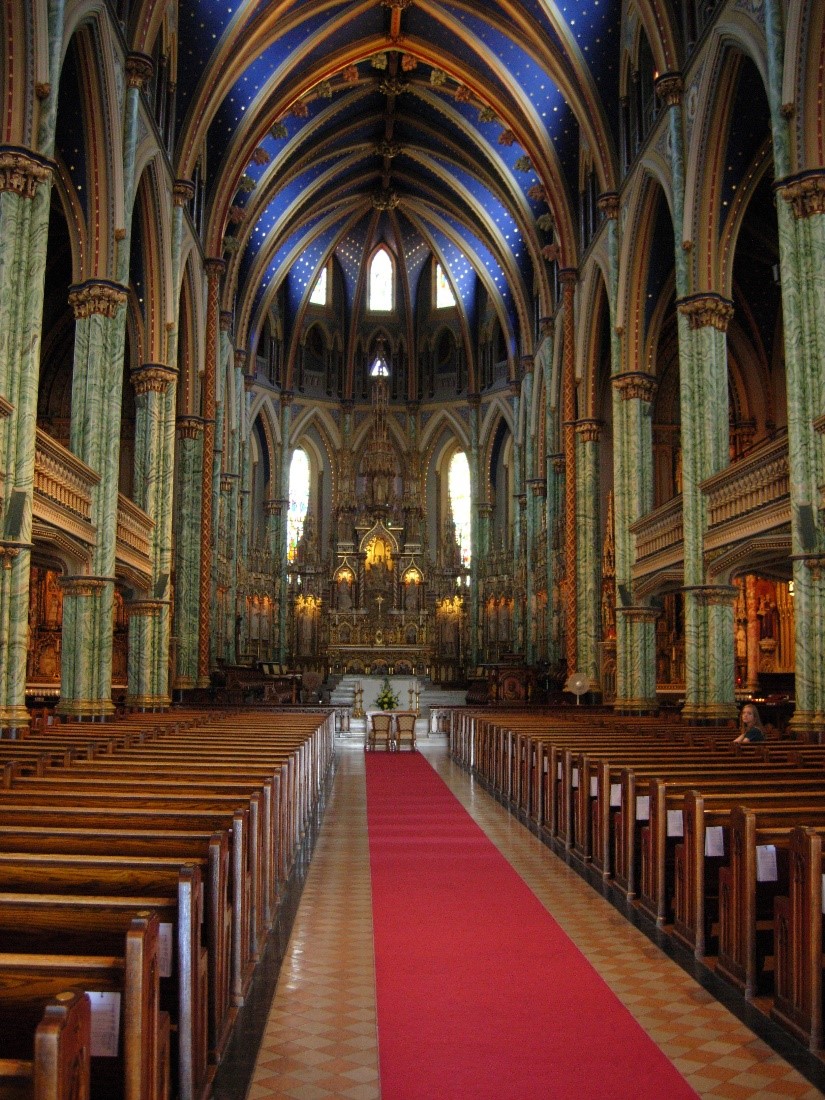
3.2. Alterations
Over time, a heritage place of worship may require alterations, either to accommodate changes in religious use or community programs, or to comply with legislated requirements in such areas as public health, safety and accessibility.
Before deciding to make alterations to a heritage place of worship, it is recommended that the property owner engage a qualified person to assess the building condition and its needs (“needs assessment”), to help determine the appropriate course of action over time. This assessment should outline:
- whether current conditions, unchanged or with minor modifications, would conserve the cultural heritage value while meeting the religious needs and/ or legislated requirements
- the impact, both physical and visual, of the proposed change on the heritage attributes
- whether the proposed change will improve the heritage place of worship’s long-term viability
- the resources required for the proposed change and its long-term maintenance
If the alteration will affect the heritage attributes of the heritage place of worship or its appearance in its context (for example, construction of an addition), a heritage impact assessment by a qualified person is also recommended.
A heritage impact assessment is a study to determine if a heritage property will be impacted by a specific proposed development or site alteration. This type of study can also show how the heritage place of worship could be conserved in the context of a site redevelopment or alteration (for example, subdivision of the property).
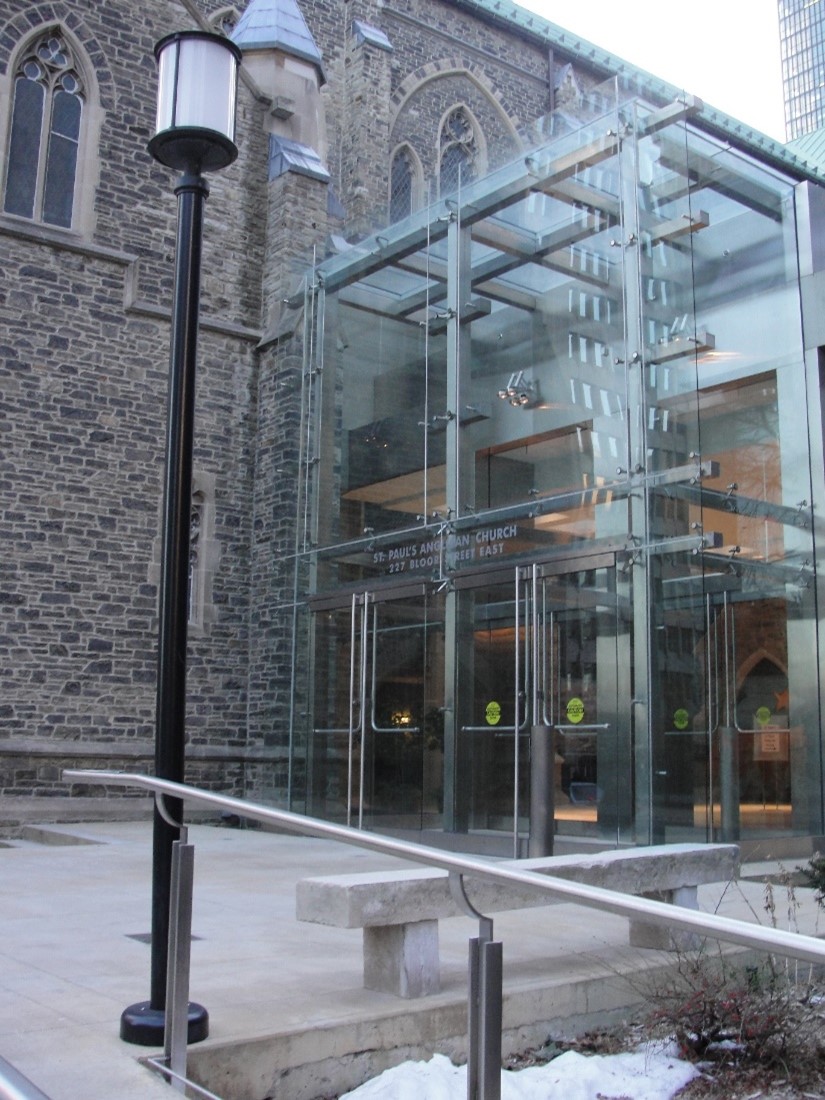
If the property is designated or protected by an easement, sharing this documentation, together with a description of the religious needs and mission of the place of worship, with the municipality or easement holder before making an application for alteration will allow for early dialogue in the decision-making process.
Recognizing that heritage properties may require alteration as needs and uses shift over time, the Ontario Heritage Act provides a statutory and procedural framework to help manage and guide change in a way that also sustains the cultural heritage value of the property.
The alteration processes set out in Parts IV and V of the Ontario Heritage Act help to enable the heritage attributes of a designated property or a property in a heritage conservation district to be conserved. If the owner of an individually designated property under Part IV wishes to make alterations to the property that are likely to affect the property’s heritage attributes (as set out in the description of the property’s heritage attributes in the designation bylaw), the owner must apply to the municipal council and receive written consent. The Ontario Heritage Act also provides a streamlined alterations approvals process that applies to a limited set of alterations to designated places of worship where the municipality is required to consent where certain prescribed conditions are met, without terms and conditions, to proposed alterations. Please see section 3.3 of this guide for more information about this process.
Similarly, if the owner of a property situated in a heritage conservation district wishes to alter any part of the property (other than the interior of any structure or building on the property), the owner must apply to the municipality for a permit from the municipality.
Under the Ontario Heritage Act, the property owner may appeal municipal decisions on alteration applications to the Ontario Land Tribunal (the Tribunal), which has the power to render a decision that is binding. If a place of worship has been listed on a municipal register (section 27) but is not an individually designated property under Part IV or located within a heritage conservation district designated under Part V, the Ontario Heritage Act does not require municipal consent for alterations. It is recommended, however, that owners of non-designated heritage places of worship included in a municipal register engage with the municipality when considering an alteration.
Properties protected by heritage conservation easements have their own specific review and approval processes for alterations.
Early contact and communication between the property owner, the municipality or easement holder and the municipal heritage committee, where one exists, is important. Having discussions and identifying any issues at the beginning of the process will save time and money and help build community understanding and relationships.
The designation bylaw is a guiding document for a municipality considering alteration or demolition applications to a designated heritage place of worship. Municipalities should also consider any other relevant requirements that might apply to the particular situation (for example, Provincial Planning Statement, Ontario Building Code) when making their decision.
In addition, key considerations include:
- reason for the alteration (for example, liturgical purposes, public safety, accessibility)
- the appropriateness of the proposed design, character and materials proposed
- other options considered and rationale for the preferred option
- whether the alteration improves the property’s continued use
- alignment of the proposed alteration with the guiding principles for conservation of cultural heritage properties (for example, reversibility)
- history of changes to the property
- visual impact of the alteration on the heritage attributes and appearance
- visual and physical impact of the alteration on surrounding properties
- impact of the alteration on other features of the place of worship (for example, an alteration that allows more natural light into the interior may negatively affect light-sensitive objects such as works of art)
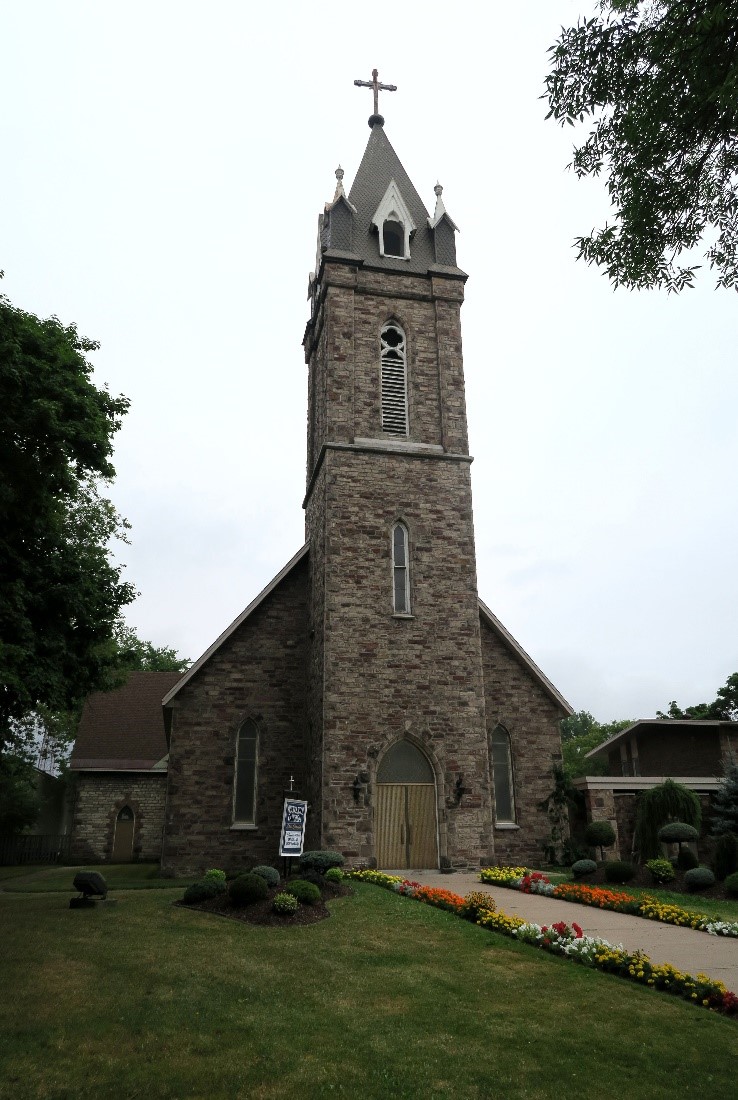
3.3. Streamlined Process for Alterations for Buildings used for Religious Practices
Section 33 of the OHA requires property owners to seek municipal council consent when making alterations to designated heritage properties if the alteration is likely to affect the property’s heritage attributes as set out in the designation bylaw. Council can then consent, consent with terms or conditions or refuse the application.
Subsections 33(18) to (26) of the OHA set out a streamlined alterations approvals process that applies to a narrow set of proposed alterations to buildings used primarily for religious practices. Municipalities are required to consent, without terms and conditions, to proposed alterations where all requirements of the provision are met. Religious practices include Indigenous religious and sacred sites of significance to Indigenous community for purposes of this provision.
The intent of this streamlined process is to make it faster and easier for religious organizations to make alterations to certain heritage buildings (see side bar definition of “building”) that are required to support religious practices. Requests to demolish or remove a building, structure or heritage attribute are addressed through section 34 of the OHA, which does not include a streamlined process.
This streamlined process allows religious groups to move forward with their proposed alterations more quickly in situations where the requirements of the provision are met. Municipalities must rely exclusively on the affidavit or sworn declaration to demonstrate that the conditions of the application are met.
Council must consent, without terms or conditions, to proposed alterations to buildings, as defined in section 6.4 of O. Reg. 385/21, on designated property where the following conditions under subsection 33(18) of the OHA (and section 6.1 of O. Reg. 385/21) are met:
- the alteration is required for one of the following:
- an Indigenous community or Indigenous organization
- a religious organization that is not an Indigenous organization if the organization is a registered
- the building, or part of the building, to be altered is primarily used for religious practices
- the heritage attributes identified in the application are connected to religious practices
- the alteration of the heritage attributes identified in the application is required for religious practices
- the alteration is not for the purposes of an addition to a building
- the applicant provides council with an affidavit or sworn declaration that the application meets the conditions above
- the affidavit or sworn declaration must be sworn or affirmed by an individual with authority to represent the religious organization, Indigenous community or Indigenous organization for whom the alteration is required
Required Information and Material
The following information and material must accompany an alteration application under subsection 33(1) of the Ontario Heritage Act that meets the conditions set out in subsection 33(18) of the Act:
- the name, address, telephone number and, if applicable, the email address of the applicant
- the name of the municipality from which consent is being requested
- a description of the property that is the subject of the application, including such information as the concession and lot numbers, reference plan and part numbers, and street names and numbers
- photographs that depict the existing building and the described heritage attributes of the building that would likely be affected by the proposed alteration, including the condition and context of the attributes
- a site plan or sketch that illustrates the location of the building subject to the proposed alteration
- identification of the heritage attributes of the building that are connected to religious practices and a description of the potential impacts of the proposed alteration on those heritage attributes
- drawings and written specifications of the proposed alteration
- if the proposed alteration is required for a religious organization that is not an Indigenous organization, the registered charity number of the religious organization
Timeline for determination of complete application
Municipalities are required to provide consent, without terms or conditions, once they determine an application for alterations is complete. There is a 60-day timeline from the date the application is served on the municipality for council to determine the application is complete and issue a notice of consent to the application, or determine the application is incomplete and issue a notice of incomplete application.
There is an additional 60-days for council to issue a notice following resubmission of an application that was previously determined to be incomplete.
Consent is deemed to be provided if the timeline to provide notice of consent or notice of an incomplete application is not met.
Definitions
For the purposes of subsection 33(18) of the Ontario Heritage Act, “building” means,
- with respect to an alteration that is required for an Indigenous community or organization, a building that the Indigenous community or organization has identified as a place used for Indigenous religious or spiritual practices
- with respect to an alteration that is required for a religious organization that is not an Indigenous organization, a building that the religious organization has identified as a church, mosque, synagogue, temple, chapel or other place of worship, but not a building where the primary function is to provide education, healthcare, long-term care, community services, social services or commercial, institutional or industrial operations, even if the building contains a space within it dedicated to religious practices
3.4. Additional consideration for exterior alterations
Concerns for exterior alterations (restoration, additions, demolitions or expansions) generally focus on sensitivity to the historic appearance of the buildings, property and the context.
If the alteration is an addition, a range of design options is possible, from historic reproduction to contemporary. Key considerations include:
- impact of the addition’s form, scale, massing, and positioning on the design and context of the heritage property
- impact on the historic appearance and functionality of the building
- how the materials and finishing fit with the heritage building
- additional considerations for interior alterations
3.5. Additional consideration for interior alterations
Interior features of a heritage place of worship can be included as heritage attributes in the designation bylaw for individually designated properties. Examples of interior features that could be identified as heritage attributes include, but are not limited to, columns, screens, pulpits, memorials, light fixtures and decorative woodwork. Alterations to the interior may be necessary for liturgical reasons, to further the faith group’s community mission, to address requirements of public safety, access or security or to restore the original appearance.
In addition to the general considerations, other issues that may arise when considering alterations to the interior of a heritage place of worship include:
- impact of the proposed alteration on the original design, appearance and functionality of the building’s interior
- how any new elements, materials and finishes fit with the interior heritage attributes and affect how people use or experience the building (for example, covering or removal of floor finishes can have an impact on acoustics as well as a visual impact)
- how elements that might be removed (for example, seating that is being updated) will be maintained or reused
As with exterior alterations, the approach to interior alterations should be sensitive to the heritage attributes of the heritage place of worship. The alteration, removal or demolition of a heritage attribute identified in the designation bylaw requires the approval of council.
3.6. Subdivision of property
Property owners of heritage places of worship on large properties may consider opportunities to divide the land into two or more parcels and offer one or more for sale, as a means to secure funding to support the upkeep of the heritage property or other initiatives. This is subdividing property and the provisions of the Planning Act come into play. Property owners should consult with municipal planning departments to identify if land division would be a viable option and what the municipal requirements would be. In addition to review of cultural considerations, which could include a heritage impact assessment and archaeological assessment, the municipality may require additional studies related to potential changes in land use, traffic impact, municipal servicing, tree preservation and other planning and engineering related studies.
If the property owner proposes to subdivide the property for development purposes, key considerations include:
- the statement of cultural heritage value or interest may include the landscape or context of the property
- visual impact of the proposed subdivision and development on the heritage place of worship (for example, setbacks, size, height)
- impact on views and sightlines to the heritage place of worship from the street and neighbouring properties
- an archaeological assessment may be required if the property has archaeological potential (for example, cemeteries, which may also have burials outside the boundary of the property)
3.7. Planning tools for heritage conservation
Some municipalities may support planning and development changes as an incentive to retain heritage places of worship with cultural heritage value or interest in a new development. One example of this is rezoning to adjust density.
Essentially, this involves protecting a heritage property (for example, through designation or heritage easement) to ensure that it is conserved, in exchange for allowing the developer to increase the amount of floor space or number of residential units they are allowed to create on a subdivided or neighbouring property through a rezoning process.
As this is a Planning Act process, property owners should consult with the municipal planning department for information on their land use policies regarding this process.

The Provincial Planning Statement also enables municipalities to develop policies and processes to consider mitigative measures and/or alternative development approaches, with the goal of conserving the heritage attributes of a protected heritage property potentially affected by adjacent development or site alteration.
3.8. Community partnerships
Due to their public community-based mission, heritage places of worship are often thought of as semi-public spaces. The value of the heritage place of worship’s history of community service is often considered when evaluating its cultural heritage value or interest. Property owners may seek assistance and support from a wider community beyond their faith group. Partners or friends’ groups can assist with their care, maintenance and sustainability.
For the local neighbourhood or community, many heritage places of worship provide large exhibition, performance or gathering spaces, making them ideal partners for local groups or community meetings. These partnerships are mutually beneficial and help to maintain the viability of a heritage place of worship that otherwise might struggle to survive.
For the property owner, involving the wider community in the use of the heritage place of worship builds a broader base of supporters for its conservation and confirms the fact that it is a shared landmark that others value.
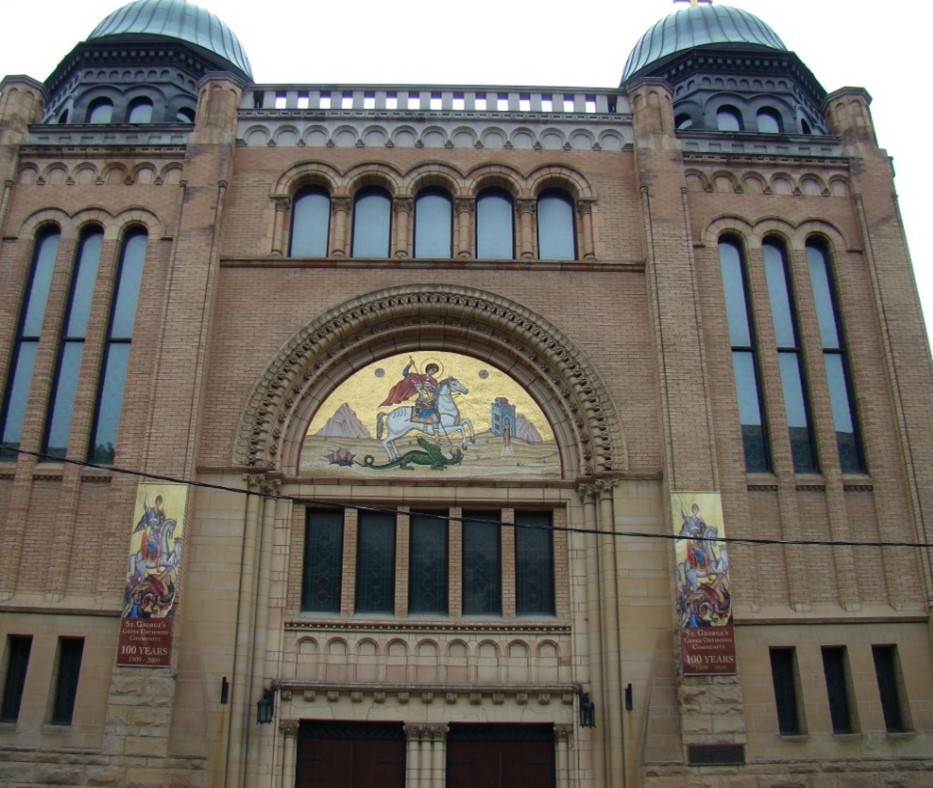
Case study 3: Beth Ezekiel Synagogue, Owen Sound — Managing heritage values of a heritage place of worship
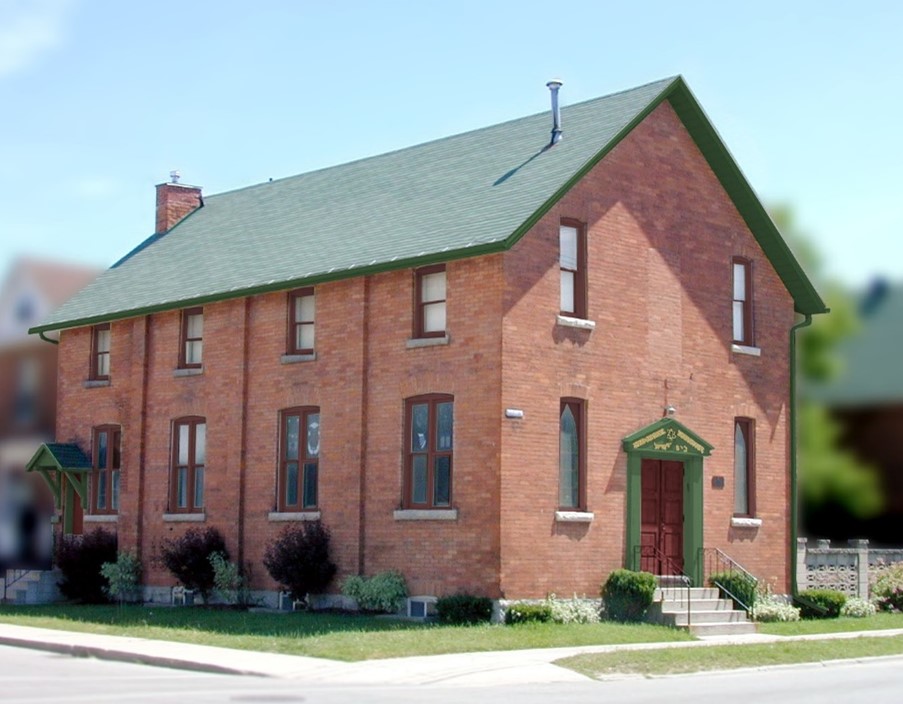
Designated in 1990 under the Ontario Heritage Act.
Community members of Beth Ezekiel Synagogue refer to it as a ‘Shul’, a Yiddish term meaning “school” or “community”. The former Methodist church (constructed in 1903) is the centre of the Jewish community in Owen Sound.
Jewish families in Owen Sound began meeting in various temporary locations in about 1904. When the former Calvary Church was put up for sale in 1946, community members pooled their resources to purchase it. Because of the Eastern orientation, simple design, and plain windows, few changes were needed to make it into a synagogue. The Ark (an ornamental cabinet where the sacred Torah scrolls are kept) was also reclaimed from a Toronto synagogue demolished in the 1940s.
In 1989 the synagogue contacted the City of Owen Sound to inquire about a heritage designation. Municipal staff met with the members to explain what heritage designation would mean, and the following year Beth Ezekiel was designated under the Ontario Heritage Act. Rather than focus on the architectural elements, the designation reflects the heritage place of worship’s meaning to the Jewish community and its connection to pioneering Jewish families in rural communities.
Designation gave the synagogue access to grants. As well as addressing immediate repairs, the synagogue used some of the funds to hire a heritage consultant. The consultant assessed the building’s condition, recommended alterations for its long-term viability while maintaining heritage attributes, and prepared a conservation plan.
By the 1990s, only 15 families remained in the congregation. Members began to discuss what to do with the building as membership declined. They decided to undertake a commemorative window project: each family worked with a local artist to design a window that told their unique story. Refurbishing the windows renewed members’ sense of pride and spiritual connection to the building.
In 2002, major structural problems were discovered. After much deliberation and with some concern, the congregation decided to open the doors to the wider community to raise the necessary repair funds. “Rhythm and Jews”, a fundraising event highlighting the music, stories and food of the Jewish community, quickly sold out and donations began pouring in. $30,000 was raised for the restoration work. More importantly, the event reconnected the Shul with the broader Jewish community, more than doubling the congregation.
Since then, the community has continued to raise funds and work on the conservation of the building, in order to meet its evolving community and religious needs. The municipality has contributed to the cost of exterior improvements, including painting, banners and custom-made shutters. In 2007, a major renovation of the courtyard was completed, extending the use of the building without affecting the historic design.
Points to note
- Designation allows the heritage place of worship to access funding for restoration work.
- The development of a conservation plan helps manage change in a way that minimizes impacts on the cultural heritage value without stopping change altogether.
- Fundraising and capital projects provide social and spiritual connection in the community.